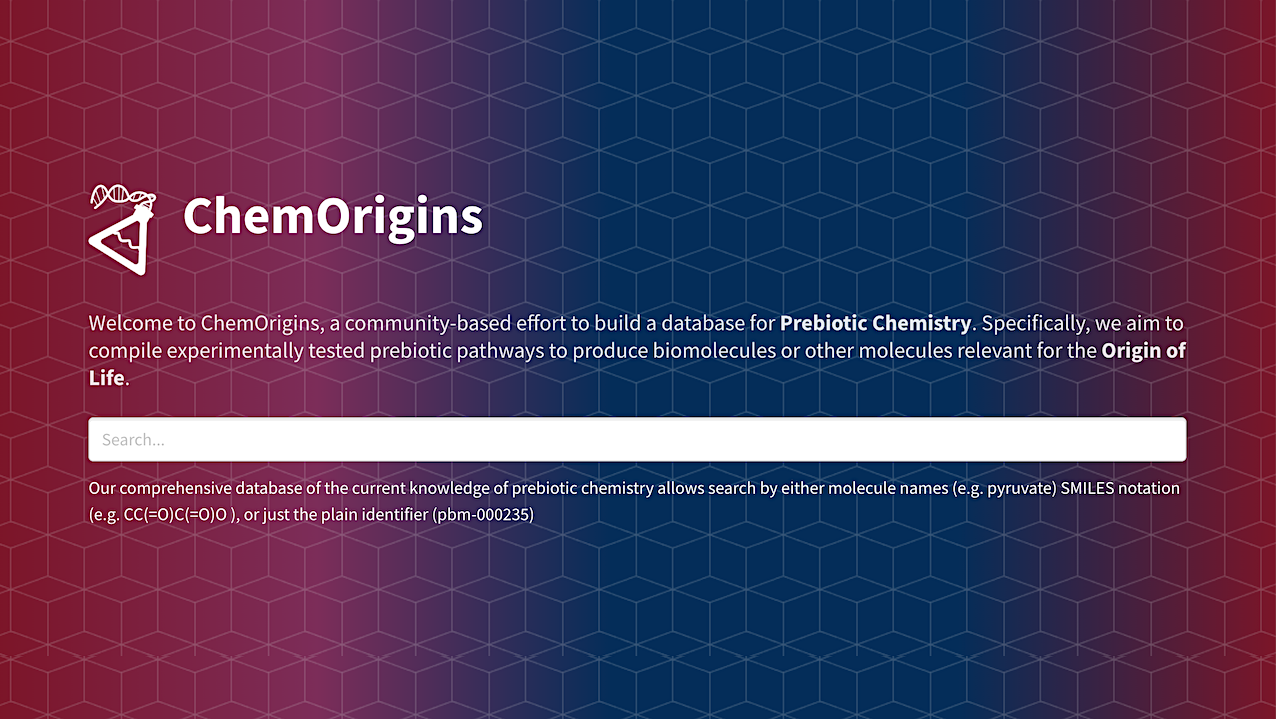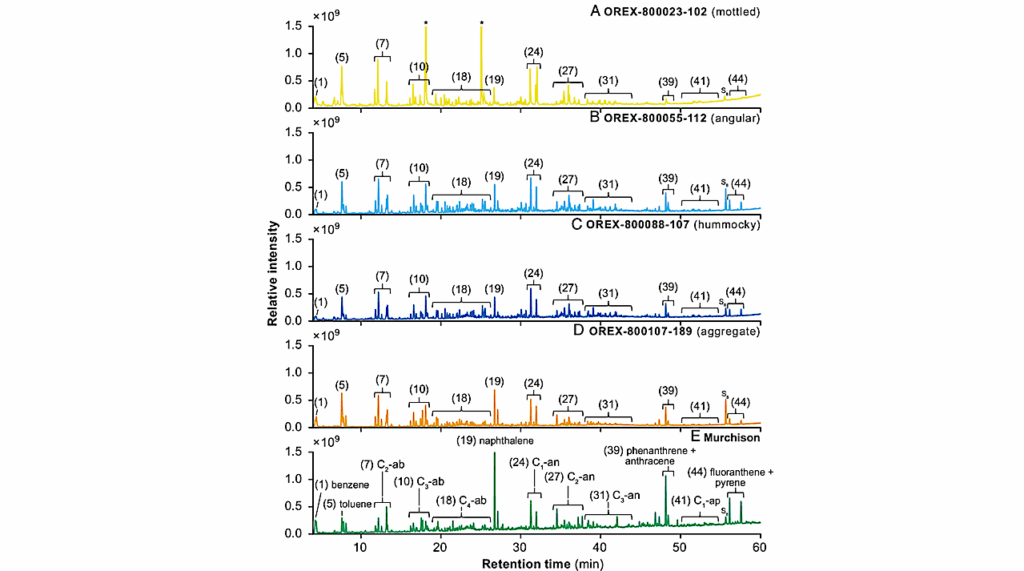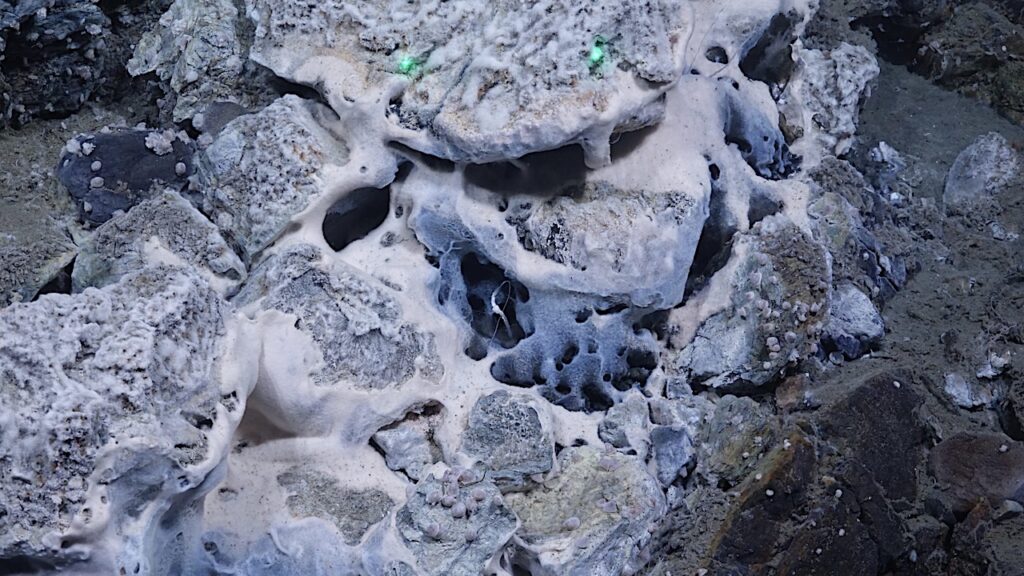Now Reading: ChemOrigins: A Community Curated Database For Origins Of Life Chemistry
-
01
ChemOrigins: A Community Curated Database For Origins Of Life Chemistry
ChemOrigins: A Community Curated Database For Origins Of Life Chemistry


ChemOrigins
The origin of life is one of the most compelling questions in science. While experimental prebiotic chemistry has produced a wide range of reactions and plausible pathways, the resulting data remain fragmented across numerous publications and disciplinary journals.

ChemOrigins data life cycle: from curators, who create the original annotations, to end users through the graph database and the web interface. In gray, we included some of the components of ChemOrigins, such as the data processing pipelines or the version control system that enables collaborative curation of prebiotic chemistry. — biorxiv.org
Here, we introduce ChemOrigins, (https://chemorigins.bact.wisc.edu/) an open-access, community-curated knowledge graph that organizes experimentally supported prebiotic reactions. By representing molecules, reactions, conditions, and literature sources as interconnected nodes, ChemOrigins enables modular grouping of reactions and supports complex, query-driven exploration via a graph database architecture.
We demonstrate the utility of this framework through text-based searches, reaction network expansions, and the interactive visualization of user-annotated chemical modules. Unlike generative models, ChemOrigins prioritizes curated, evidence-based content and fosters community contributions through expert annotations and a user-friendly interface.
As a structured resource, ChemOrigins is designed to complement existing chemical databases and serve as a foundation for computational, educational, and theoretical research in the origins-of-life field.

Representation of the schema employed in ChemOrigins (https://chemorigins.bact.wisc.edu/). (a) Graph highlighting the different kinds of entities that we might find represented in ChemOrigins, together with some of their attributes (e.g., temperature, SMILES, etc) and the relationships between them. (b) Graph representation of the data associated with a given reaction (shown at the top of the figure), including substrate and product molecules (blue), the conditions at which those reactions took place (in this case, we highlight the temperature), the agents that allowed that reaction (in this case, different iron associated minerals) and finally, the source of the data, which is identified by its DOI. — biorxiv.org

Example visualizations of ChemOrigins data. (a) Pathways leading to alanine in our database. We find three different pathways: a pyruvate-based pathway, a Strecker synthesis pathway, and a reduction pathway from serine. (b) Pathways involving 1,3-oxazol-2-amine. This compound is an essential intermediate in the synthesis of nucleotides. (c) Possible prebiotic pathway enabling carbon fixation through a combination of environments. — biorxiv.org
ChemOrigins: A community curated database for origins of life chemistry, biorxiv.org
Astrobiology,
Stay Informed With the Latest & Most Important News
Previous Post
Next Post
-
 012024 in Review: Highlights from NASA in Silicon Valley
012024 in Review: Highlights from NASA in Silicon Valley -
 02Panasonic Leica Summilux DG 15mm f/1.7 ASPH review
02Panasonic Leica Summilux DG 15mm f/1.7 ASPH review -
 03How New NASA, India Earth Satellite NISAR Will See Earth
03How New NASA, India Earth Satellite NISAR Will See Earth -
 04And Thus Begins A New Year For Life On Earth
04And Thus Begins A New Year For Life On Earth -
 05Astronomy Activation Ambassadors: A New Era
05Astronomy Activation Ambassadors: A New Era -
06SpaceX launch surge helps set new global launch record in 2024
-
 07Space Force plans new ‘Futures Command’ amid pressure to speed up modernization
07Space Force plans new ‘Futures Command’ amid pressure to speed up modernization



















